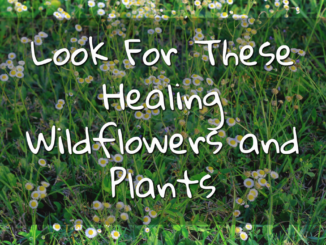
Connecting with the earth is an essential part of staying calm, relaxed and stress-free. During stressful times we all need ways to recognize the abundance of the natural world. If you live in a bubble of life containing stressful thoughts and activities, you’ll miss the natural rhythms that can ultimately keep your stress levels down.
Any type of gardening is one way to connect with the earth. You may not have acreage for a farm or even a plot for a high-yield vegetable garden, but you may have a patio or sunny spot in your home for container gardening. Make your own containers by watching this video.

By tending your container garden and watching it grow, you’ll be struck by what is vital in your life – love, water, space, and safety.
Start small, with a few pots and some easy plants to grow. Flowers can make you feel happy and add beauty to your space. Herbs and vegetables bring heavenly scents into your life and add color and creativeness to meals.
Growing vegetables in your garden can save you money. During harvest time, your own produce becomes part of your meals.
It doesn’t require much space to grow vegetables. Even a wastebasket, container, pot or a window box will do the trick.

Where space is limited, you can raise a mini-garden indoor or outdoor. When you have sun, access to water, soil and enough containers, growing a garden’s worth of fruits and vegetables in a limited space is fun for the whole family.
You can even harvest more than one crop if your choice of plants and planting schemes are all well planned and executed.
Windowsills, balconies, decks, and doorsteps are excellent as planting areas. Containers can include empty pails, tubs, plastic buckets, and cans.
What Containers can you use for planting?
To create gardening containers, you can use anything that’s in your kitchen, garage, sporting good cans, even leftover containers.
You need holes at the bottom of the containers to make sure that when you water, the water can go out of the pot. You don’t want the roots soaked in water. It’s straightforward to use any container that you have.
Reuse, recycle anything, even paper drinking cups. Take a scissor or even a hammer and nail to create holes. I usually put three or four holes; sometimes, I put a hole in the middle. Then when watering, the water goes through the soil and touches all the roots.
You can use power tools to make holes in some larger containers. A power drill and any size bits work. The bite used is usually according to the size and thickness of the containers. For example, the bit size needs to make a hole easily. You can set the drill for any speed that you like, but for safety, start slow and practice until you get the hang of it.
All sorts of items from the office and home can be used.
Ask yourself, before you throw anything out, can I reuse this?
Many people throw away possible plant containers or never think to use them. Look in the garage, cellar, attic, closet, shelf, or storage area:
old clay pots & buckets
plastic containers like yogurt containers
old sinks & bathtubs & wash tubs
paper & plastic cups
takeout containers & pans
wicker storage baskets & ice chests & glass vases & jars
Just let your imagination run wild. I have found home container gardeners feel deep satisfaction in preparing salad or seasoning the casserole with freshly picked plants from their own mini vegetable gardens. Their feeling for what they have grown makes the taste incomparable.
While saving some seeds for the next planting and keeping some frozen or preserved for the future, you can share. Your fresh vegetable surplus can be distributed to friends and loved ones.
Empowered Gardening is all about living abundantly.




Be the first to comment